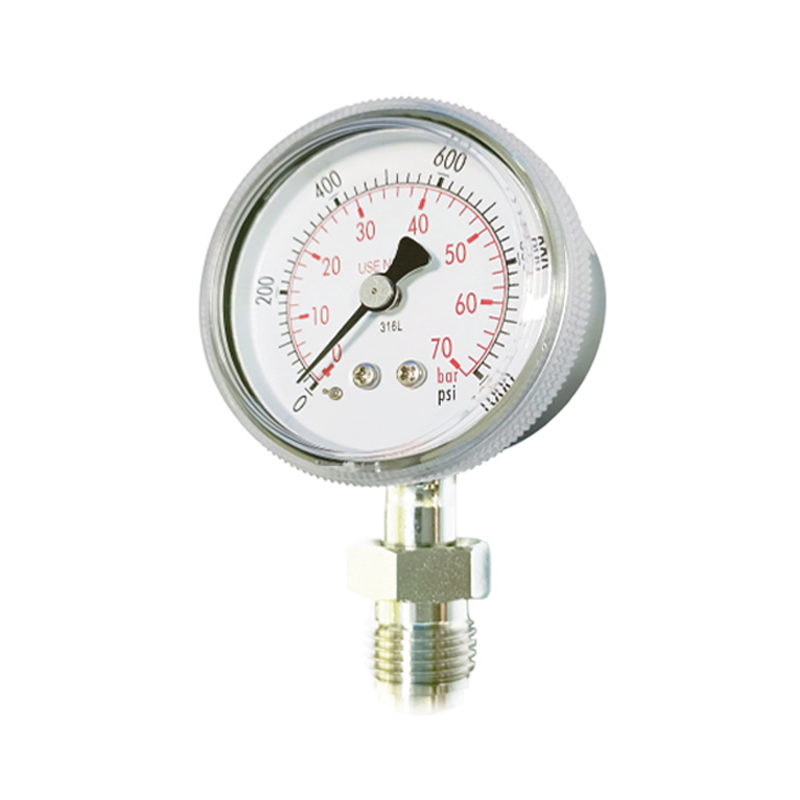
8 月 . 10, 2024 23:20 Back to list
Understanding the Functionality and Applications of Diaphragm Pressure Gauge Manufacturing Processes
Understanding Diaphragm Pressure Gauge Factory A Comprehensive Overview
Diaphragm pressure gauges are essential instruments used to measure the pressure of gases and liquids in various industrial applications. The factory that specializes in manufacturing these gauges plays a crucial role in ensuring the quality and reliability of pressure measurements across different sectors, including oil and gas, chemical processing, pharmaceuticals, and food and beverage industries. This article delves into the functionality of diaphragm pressure gauges, the manufacturing process within a dedicated factory, and the importance of quality control in ensuring product reliability.
What is a Diaphragm Pressure Gauge?
A diaphragm pressure gauge operates based on the deformation of a flexible diaphragm in response to pressure changes. When pressure is applied to one side of the diaphragm, it flexes, and this deflection is transmitted to a pointer or a digital readout, indicating the pressure on a calibrated scale. Diaphragm pressure gauges are particularly advantageous for measuring low to moderate pressure ranges and are capable of withstanding corrosive environments, making them ideal for a variety of applications.
The Manufacturing Process
The production of diaphragm pressure gauges begins with sourcing high-quality materials, such as stainless steel or other alloy materials that can resist corrosion and withstand high pressures. The primary components—diaphragms, housings, and connecting fittings—are crafted with precision.
1. Material Preparation Raw materials are inspected and cut into necessary shapes and sizes. The selection of materials is crucial as it affects the performance and longevity of the gauges.
2. Diaphragm Fabrication The diaphragm is typically made from materials such as stainless steel or Hastelloy, which offer great resilience. It is formed into a specific shape and thickness depending on the desired pressure range and application.
explain diaphragm pressure gauge factory

3. Assembly Once all components are prepared, they are assembled in a controlled environment to minimize contamination. Precision is key during this phase to ensure that the diaphragm is properly aligned with the casing.
4. Calibration After assembly, each gauge undergoes calibration to ensure accuracy. This process involves applying known pressure levels and adjusting the gauge readings accordingly.
5. Quality Assurance The final stage includes rigorous testing where gauges are subjected to extreme conditions to verify their performance. This includes pressure testing and temperature trials to ensure the gauges can operate correctly under various environmental influences.
Importance of Quality Control
In a diaphragm pressure gauge factory, quality control is paramount. The accuracy of pressure readings directly affects the operational efficiency and safety of equipment and processes in which these gauges are employed. Faulty pressure readings can lead to catastrophic failures, unsafe working conditions, and monetary losses. Therefore, factories often implement comprehensive quality management systems that adhere to international standards such as ISO 9001.
Not only does quality control encompass the raw materials and components, but it also extends to the manufacturing process and finished products. Factories typically perform routine audits and employ advanced technologies, such as computer numerical control (CNC) machines, to enhance precision in manufacturing.
Conclusion
Diaphragm pressure gauge factories are integral to the production of reliable pressure measurement instruments. Through a meticulous manufacturing process that emphasizes quality control, these facilities ensure that the gauges meet the stringent demands of various industries. As technology advances, so too do the methodologies and materials used in production, fostering continuous improvement in the performance and durability of diaphragm pressure gauges. In an ever-evolving industrial landscape, the role of these factories remains critical in maintaining the standards of safety and efficiency across multiple sectors.
-
High-Precision 5 Valve Manifold Differential Pressure Gauge Suppliers
NewsApr.29,2025
-
High-Precision Diaphragm Vacuum Pressure Gauges Manufacturers & Quotes
NewsApr.29,2025
-
Omega Differential Pressure Gauges High Accuracy & Durability
NewsApr.28,2025
-
Low Pressure Differential Pressure Gauges Precision Solutions & Quotes
NewsApr.28,2025
-
Digital Diaphragm Pressure Gaauge Precision Measurement & OEM Quotes
NewsApr.28,2025
-
Differential Pressure Gauge China Price High-Accuracy & Best Quotes
NewsApr.28,2025
